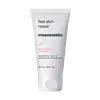What's inside
What's inside
 Key Ingredients
Key Ingredients

 Benefits
Benefits

 Concerns
Concerns

 Ingredients Side-by-side
Ingredients Side-by-side

Water
Skin ConditioningDecyl Oleate
EmollientPropylene Glycol
HumectantEthylhexyl Methoxycinnamate
UV AbsorberC12-16 Alcohols
EmollientGlycerin
HumectantBorago Officinalis Extract
EmollientBiosaccharide Gum-2
Skin ConditioningButyrospermum Parkii Butter
Skin ConditioningTocopheryl Acetate
AntioxidantButylene Glycol Dicaprylate/Dicaprate
EmollientCyclomethicone
EmollientLanolin
EmollientButyl Methoxydibenzoylmethane
UV AbsorberAscorbyl Glucoside
AntioxidantGlyceryl Stearate Citrate
EmollientSodium Hyaluronate
HumectantHydrolyzed Collagen
EmollientHydrogenated Lecithin
EmulsifyingCentella Asiatica Extract
CleansingGlycyrrhiza Glabra Root Extract
BleachingRosmarinus Officinalis Leaf Extract
AntimicrobialHelianthus Annuus Seed Oil
EmollientHydrolyzed Soy Protein
HumectantHydrolyzed Wheat Protein
Skin ConditioningPhospholipids
Skin ConditioningUbiquinone
AntioxidantHydroxydecyl Ubiquinone
AntioxidantPalmitic Acid
EmollientThioctic Acid
AntioxidantPhytic Acid
Retinyl Palmitate
Skin ConditioningSodium Carboxymethyl Betaglucan
Lactic Acid
BufferingSerine
MaskingSodium Lactate
BufferingSorbitol
HumectantUrea
BufferingTocopherol
AntioxidantTripeptide-1
Skin ConditioningAllantoin
Skin ConditioningDimethicone
EmollientHydrogenated Polyisobutene
EmollientPolyglyceryl-10 Stearate
Skin ConditioningSodium Chloride
MaskingXanthan Gum
EmulsifyingSodium Acrylates Copolymer
Alcohol Denat.
AntimicrobialPentylene Glycol
Skin ConditioningButylene Glycol
HumectantCaprylyl Glycol
EmollientBenzoic Acid
MaskingImidazolidinyl Urea
PreservativePhenoxyethanol
PreservativeMethylparaben
PreservativePropylparaben
PreservativeEthylparaben
PreservativeParfum
MaskingWater, Decyl Oleate, Propylene Glycol, Ethylhexyl Methoxycinnamate, C12-16 Alcohols, Glycerin, Borago Officinalis Extract, Biosaccharide Gum-2, Butyrospermum Parkii Butter, Tocopheryl Acetate, Butylene Glycol Dicaprylate/Dicaprate, Cyclomethicone, Lanolin, Butyl Methoxydibenzoylmethane, Ascorbyl Glucoside, Glyceryl Stearate Citrate, Sodium Hyaluronate, Hydrolyzed Collagen, Hydrogenated Lecithin, Centella Asiatica Extract, Glycyrrhiza Glabra Root Extract, Rosmarinus Officinalis Leaf Extract, Helianthus Annuus Seed Oil, Hydrolyzed Soy Protein, Hydrolyzed Wheat Protein, Phospholipids, Ubiquinone, Hydroxydecyl Ubiquinone, Palmitic Acid, Thioctic Acid, Phytic Acid, Retinyl Palmitate, Sodium Carboxymethyl Betaglucan, Lactic Acid, Serine, Sodium Lactate, Sorbitol, Urea, Tocopherol, Tripeptide-1, Allantoin, Dimethicone, Hydrogenated Polyisobutene, Polyglyceryl-10 Stearate, Sodium Chloride, Xanthan Gum, Sodium Acrylates Copolymer, Alcohol Denat., Pentylene Glycol, Butylene Glycol, Caprylyl Glycol, Benzoic Acid, Imidazolidinyl Urea, Phenoxyethanol, Methylparaben, Propylparaben, Ethylparaben, Parfum
 Reviews
Reviews

Ingredients Explained
These ingredients are found in both products.
Ingredients higher up in an ingredient list are typically present in a larger amount.
This ingredient is also known as shea butter. It is an effective skin hydrator and emollient.
Emollients help soothe and soften your skin. It does this by creating a protective film on your skin. This barrier helps trap moisture and keeps your skin hydrated. Emollients may be effective at treating dry or itchy skin.
Shea butter is rich in antioxidants. Antioxidants help fight free-radicals, or molecules that may harm the body. It is also full of fatty acids including stearic acid and linoleic acid. These acids help replenish the skin and keep skin moisturized.
While Shea Butter has an SPF rating of about 3-4, it is not a sunscreen replacement.
Shea butter may not be fungal acne safe. We recommend speaking with a professional if you have any concerns.
Learn more about Butyrospermum Parkii ButterGlycerin is already naturally found in your skin. It helps moisturize and protect your skin.
A study from 2016 found glycerin to be more effective as a humectant than AHAs and hyaluronic acid.
As a humectant, it helps the skin stay hydrated by pulling moisture to your skin. The low molecular weight of glycerin allows it to pull moisture into the deeper layers of your skin.
Hydrated skin improves your skin barrier; Your skin barrier helps protect against irritants and bacteria.
Glycerin has also been found to have antimicrobial and antiviral properties. Due to these properties, glycerin is often used in wound and burn treatments.
In cosmetics, glycerin is usually derived from plants such as soybean or palm. However, it can also be sourced from animals, such as tallow or animal fat.
This ingredient is organic, colorless, odorless, and non-toxic.
Glycerin is the name for this ingredient in American English. British English uses Glycerol/Glycerine.
Learn more about GlycerinSodium Hyaluronate is hyaluronic acid's salt form. It is commonly derived from the sodium salt of hyaluronic acid.
Like hyaluronic acid, it is great at holding water and acts as a humectant. This makes it a great skin hydrating ingredient.
Sodium Hyaluronate is naturally occurring in our bodies and is mostly found in eye fluid and joints.
These are some other common types of Hyaluronic Acid:
Learn more about Sodium HyaluronateWater. It's the most common cosmetic ingredient of all. You'll usually see it at the top of ingredient lists, meaning that it makes up the largest part of the product.
So why is it so popular? Water most often acts as a solvent - this means that it helps dissolve other ingredients into the formulation.
You'll also recognize water as that liquid we all need to stay alive. If you see this, drink a glass of water. Stay hydrated!
Learn more about Water